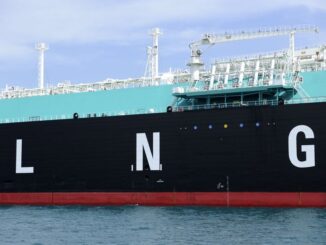
State-owned oil and gas giant PetroChina forecasts that China’s natural gas demand growth in 2022 may be the lowest annual rate on record — and possibly even negative — as high LNG prices, sluggish economic growth and COVID-related curbs batter consumption, a senior company executive at PetroChina’s natural gas sales eastern branch unit said.
This forecast is more bearish than the National Energy Administration’s in its 2022 China Natural Gas Development Report released Aug. 19, which forecast China’s apparent natural gas consumption to grow 1%-3% year on year to 375-380 Bcm in 2022.
The PetroChina executive at an industry event said it was the second time since 2005 that China’s natural gas consumption growth rate was forecast to be lower than its GDP; the last time was in 2015.
China’s GDP will likely grow by 3.5%-4% year on year in 2022, the executive said. The country’s annual natural gas demand growth averaged 13% over 2005-2021, PetroChina data showed.
“We saw natural gas consumption shrink obviously in eastern China this year, especially in the Yangtze River Delta region,” the executive said.
COVID-19 outbreaks in Shanghai in the second quarter had a great impact on the economy, with gas demand from industry, power generation, public services and transportation sectors falling significantly, he added.
As a result, PetroChina’s natural gas sales in the eastern region fell 20% year on year in April, 12% year on year in May and 9% year on year in June, the executive said.
Over January-September, China’s natural gas consumption totaled 269.48 Bcm, down 1.4% year on year, National Development and Reform Commission data showed.
Heating season to support demand
PetroChina expects China’s natural gas demand to be around 187-190 Bcm in the 2022-23 winter-spring heating season (November-March), up 5.5%-7.2% from 177.3 Bcm in the same period last year.
China’s gas demand is forecast at 187 Bcm if temperatures are average over the period and 190 Bcm if they are one degree Celsius below average, according to PetroChina.
“Based on experience, a one-degree Celsius change in the average daily temperature will affect 2-3% of natural gas consumption, which means a one-degree Celsius change in the national average temperature will affect the total natural gas demand by 20 million cubic meters/day,” the executive said.
The National Climate Center Nov. 3 forecast temperatures in most parts of China to be close to average or higher than average over December-February.
PetroChina has secured nearly 110 Bcm of natural gas supply for the 2022-23 winter-spring heating season, of which around 60 Bcm will be produced domestically, 38 Bcm imported natural gas and 13 Bcm filled into gas storage, the executive said.
This is up almost 10% from the last heating season, S&P Global Commodity Insights calculations based on PetroChina’s historical data showed.
City gas consumption
China’s city gas demand accounts for more than 75% of the country’s total gas demand in winter, according to PetroChina.
PetroChina expects China’s city gas demand to be steady year on year in 2022, with weakening growth in northern regions tempered by a rapid uptick in the south.
Divided by the Qinling Mountains and the Huaihe River, central heating is currently only available in the north of the dividing line while being rare in the south of the dividing line.
The government has encouraged coal-to-electricity switching and renewable energy for heating in the north in recent months, diminishing city gas demand in the north, the executive said.
However, residents in the south, particularly in Shanghai, Jiangsu, Zhejiang and Anhui, have strong heating demand, boosting local gas demand.
“Currently, there are nearly 3 million households with heating demand in these [southern] regions in winter,” the executive said, with gas demand exceeding 30 million cu m/day.
PetroChina expects gas consumption from gas-fired power plants to grow slightly while demand from the transportation sector is expected to fall amid the increased uptake of new energy vehicles and high LNG prices.
Global LNG prices are set to remain elevated in coming years, with international markets requiring demand balance for an extended period in the wake of tight supplies that are expected to support prices above $20/MMBtu through 2024-2025, Jeffrey Moore, manager LNG Analytics Asia at S&P Global Commodity Insights said recently.
The global demand-supply equilibrium will be likely restored toward 2025-2027 when more liquefaction projects come online and demand destruction becomes inevitable, and Asia ends up playing a balancing role, Moore said.
Prices are expected to fall to historic lows by 2026-2027 as more large-scale liquefaction projects come online, but “it won’t be until 2029 or even 2030 that we get to a JKM price of below $10/MMBtu,” Moore said.



